7.1.7.3. Adjustments to antiretroviral therapy regimens with TB treatment
In people with TB/HIV coinfection, the dose of DTG needs to be doubled by giving it twice instead of once a day because of drug–drug interactions with rifampicin. This extra dose of DTG is well tolerated, with equivalent efficacy in viral suppression and recovery of CD4 cell count compared with EFV (182, 183).
Table 7.2 summarizes changes needed to ART regimens for neonates, children and adolescents who are on ART when TB treatment is started, or who start ART while on TB treatment.

 Feedback
Feedback